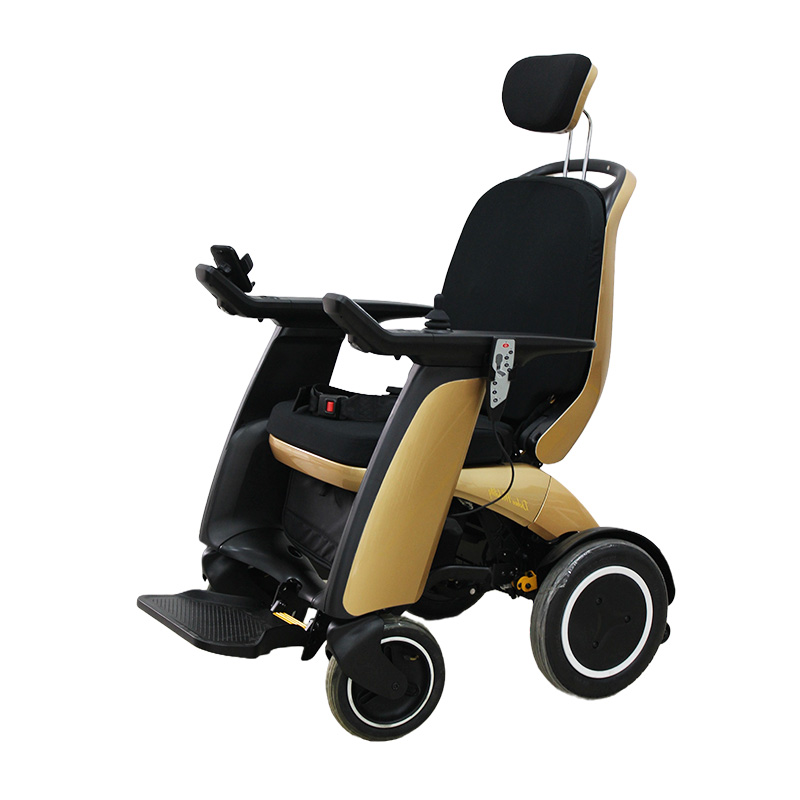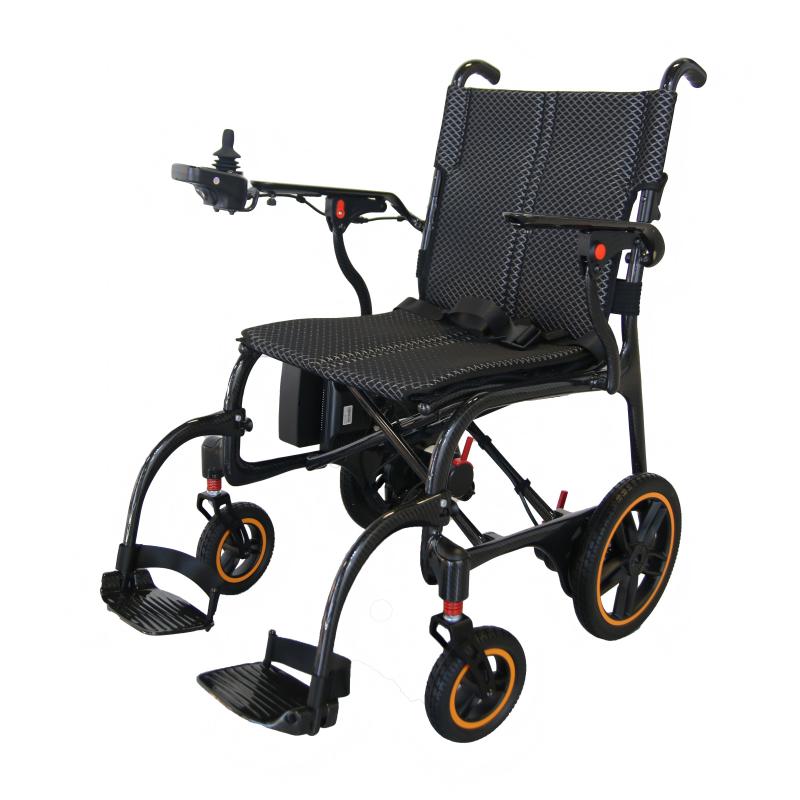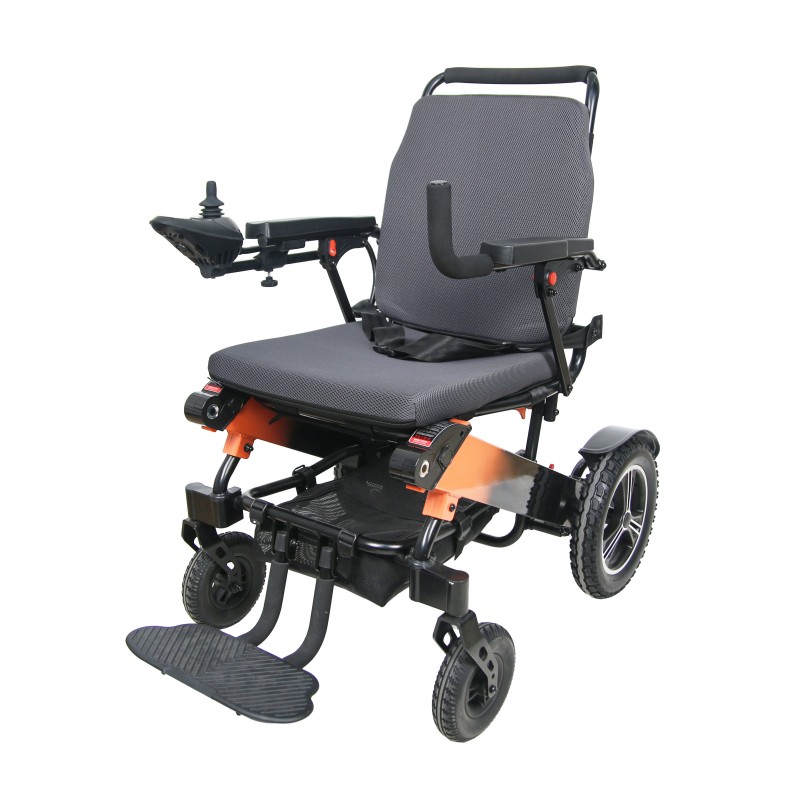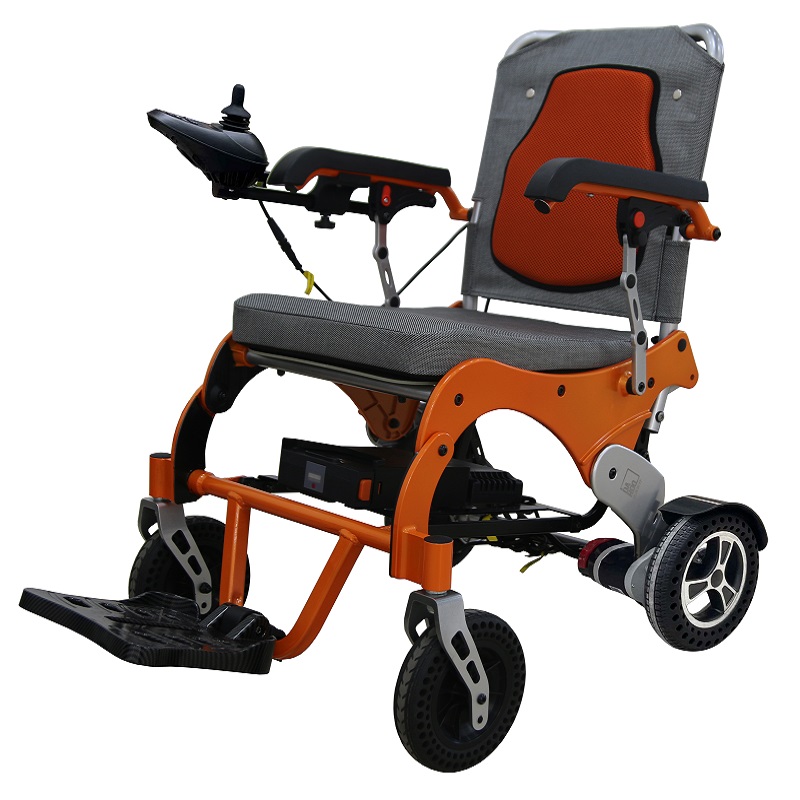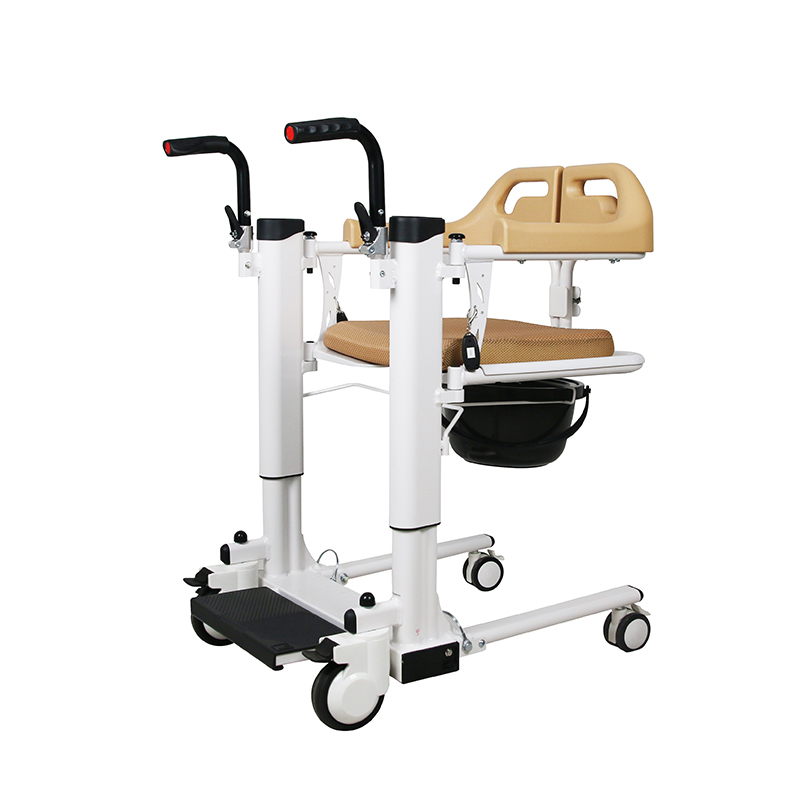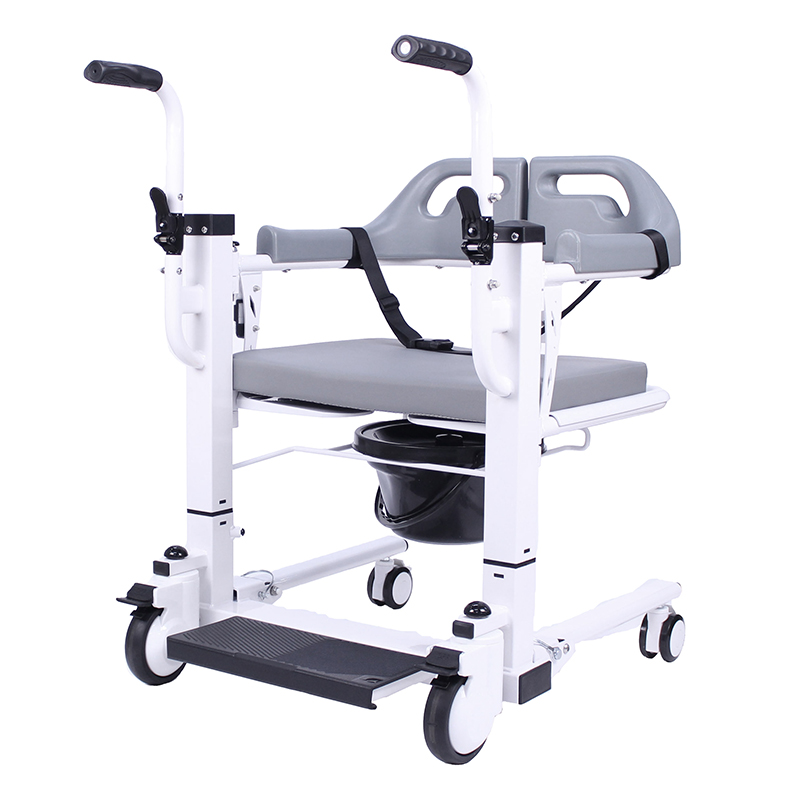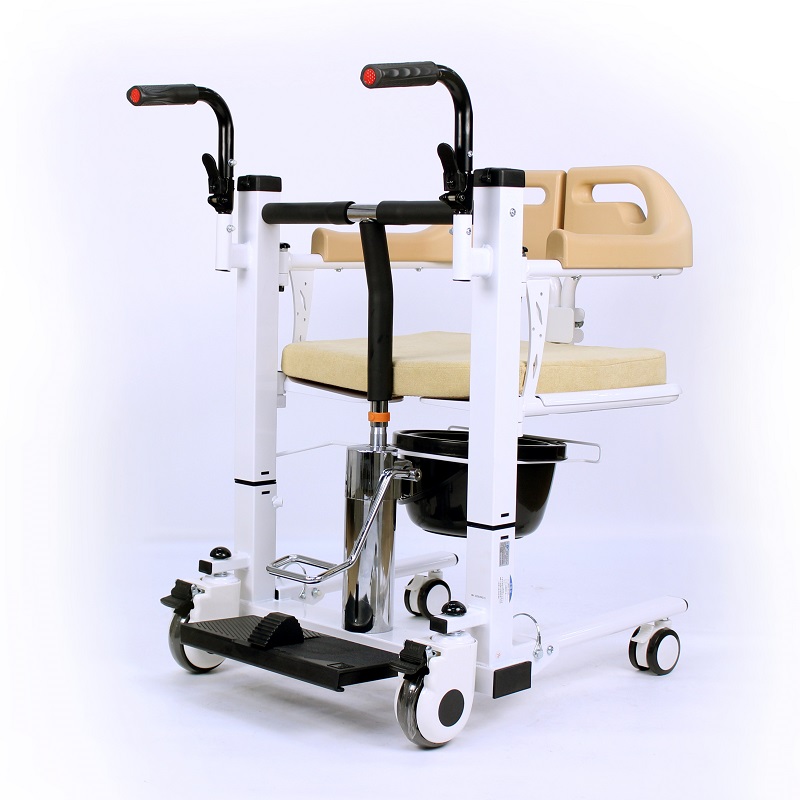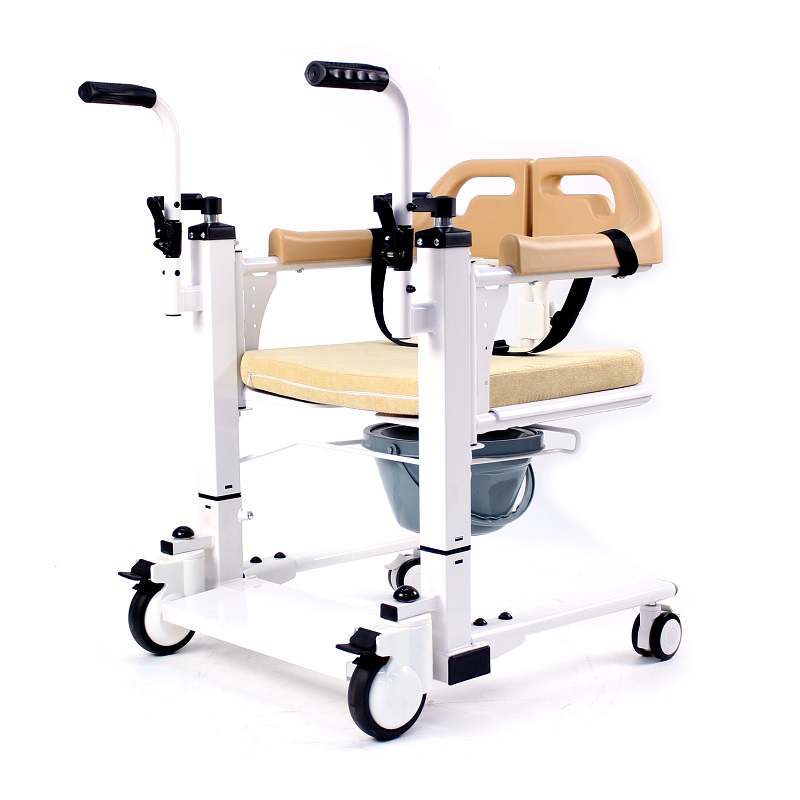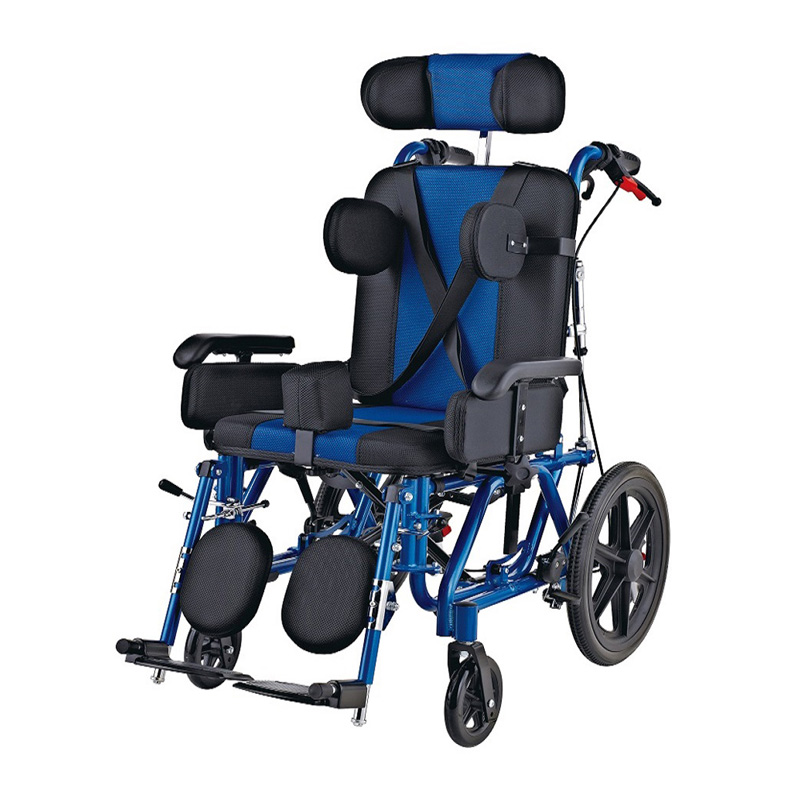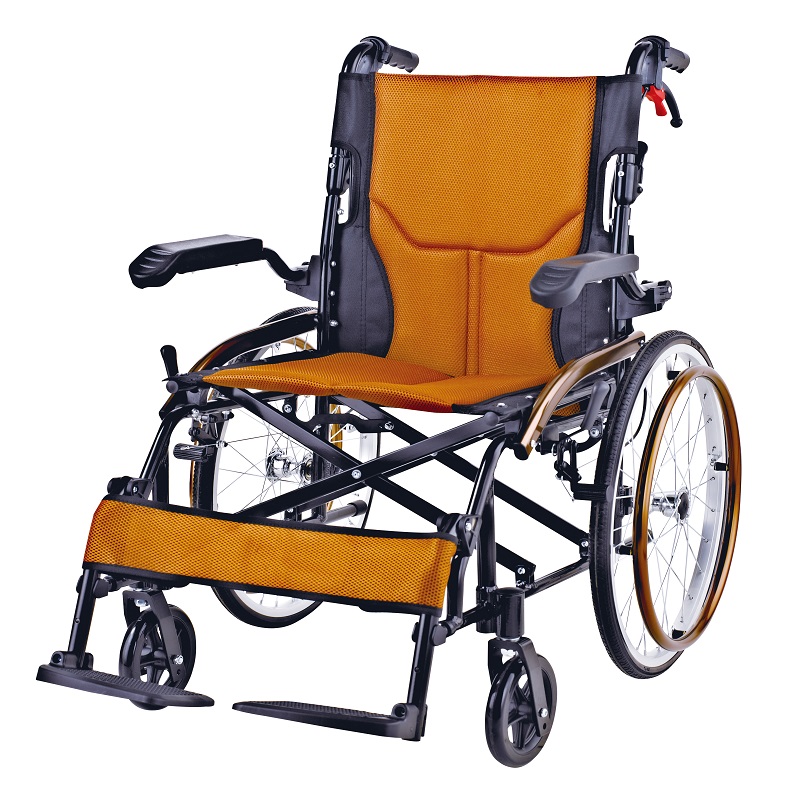In elderly care, hospital care, rehabilitation centers, and even home care, "lift transfer chairs," as a representative form of assistive mobility equipment, are increasingly being used for patient mobility, toileting assistance, and bed-to-chair transfers. However, with the widespread adoption of these devices, many patients and their families are raising a very real and perplexing question: "Can patients propel themselves in a lift chair?"
At first glance, this may seem like a simple, everyday question. However, it actually involves several key professional considerations, including the design principles and safety of lift transfer chairs, differences in patient physical abilities, device types, and the choice of care methods.
To answer this question, this article will provide a detailed explanation of the lift transfer chair's structure, primary functions, intended users, operation methods, and safety standards. Using specific models and typical scenarios, it will comprehensively assess whether patients can, should, and safely propel themselves in a lift transfer chair in various scenarios.
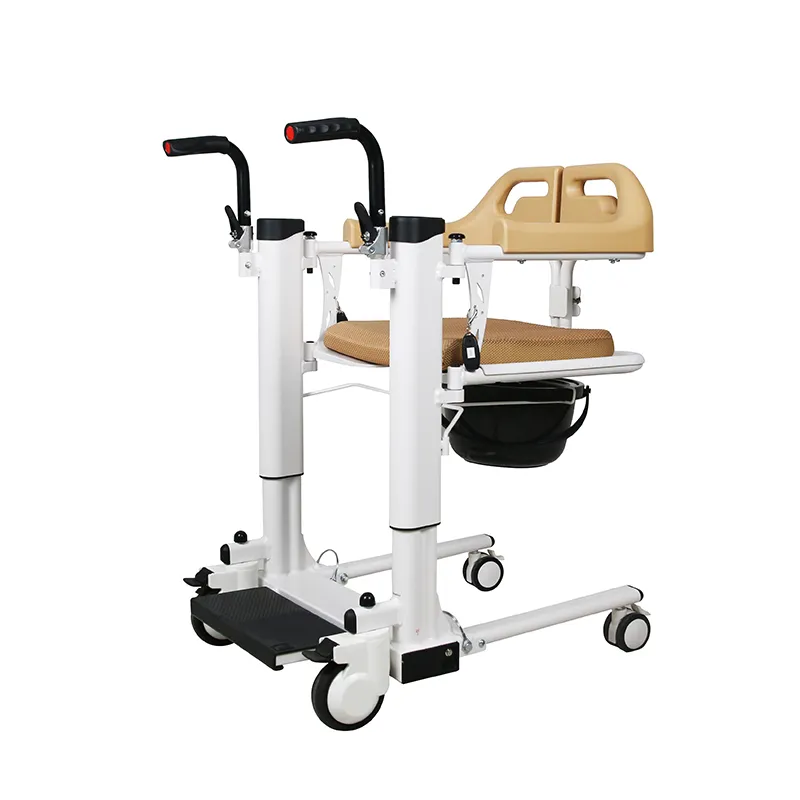
What is a lift transfer chair?
A "lift transfer chair" is a short-distance mobility and nursing assistance tool designed specifically for people with limited mobility. Its main functions include:
· Assisting patients in moving from bed to chair, and chair to toilet;
· Vertically raising and lowering the chair to accommodate different platforms;
· Horizontally pushing the chair to assist caregivers in transferring patients within rooms and wards;
· Assisting with safe procedures in special situations such as toileting and bathing.
Its core feature lies in the combination of "lifting" and "moving" functions.
Structurally, a lift transfer chair typically features the following components:
· A liftable hydraulic, pneumatic, or electric seat;
· Four wheels with brakes;
· Retractable armrests, back support, and commode access;
· Most lack large rear wheels, meaning they cannot be self-propelled.
What is the difference between a lift transfer chair and a traditional wheelchair?
To determine whether a patient can propel themselves in a lift transfer chair, it is important to understand that a lift transfer chair ≠ a manual wheelchair.
Project | Lift transfer chair | Manual wheelchair |
Propulsion method | Usually requires additional support | Can be pushed by the patient |
Rear wheel size | Small wheels (usually 4-8 inches) | Large wheels (20-24 inches) |
| Design goal | Short-distance transfer + assisted care | Suitable for long-term travel and independent transportation |
| Center of gravity design | High, easy to lift and care | Low, stable center of gravity |
| Controllability | No handles, limited self-propelled capability | Includes built-in push rims for easy self-propelling |
From a structural design perspective, a lift transfer chair is not designed for self-propelled movement.
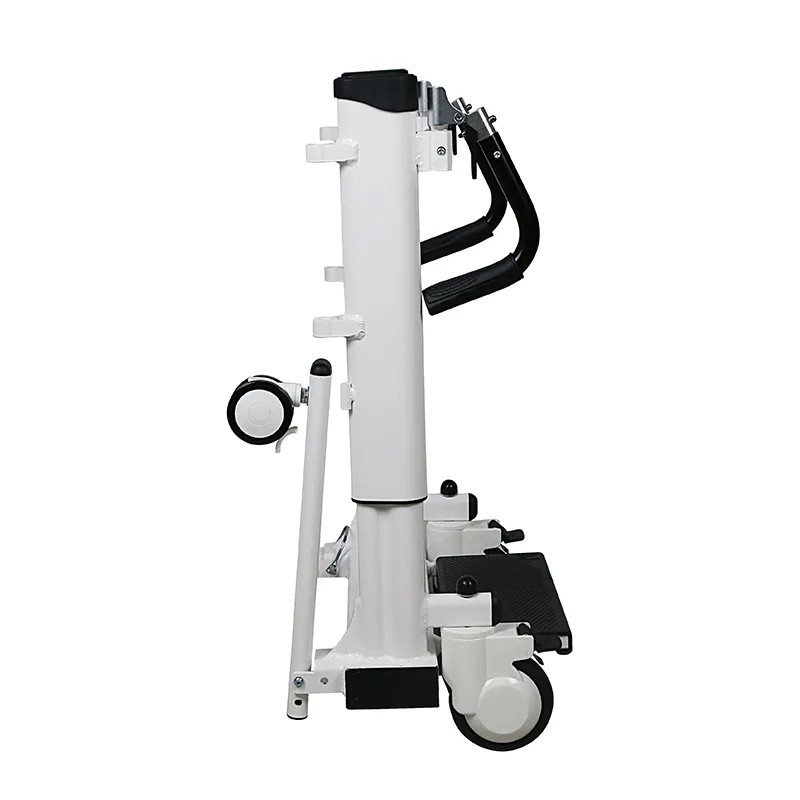
Why are lift transfer chairs difficult to propel themselves?
1. Wheel size determines propulsion force
Manual wheelchairs have large wheels with push rings. Their large diameter allows for a long rolling distance, allowing patients to travel longer distances with a single push. However, lift transfer chairs are designed with smaller wheels, emphasizing flexibility and safety. However, these wheels have high rolling resistance, making them virtually impossible for patients to propel themselves.
2. Lack of self-propulsion assistance
Most lift transfer chairs lack push rings or an electric drive system. Even if patients have strong arms, they cannot maintain a firm grip on the wheel frame to propel the chair forward.
3. Unstable center of gravity
Lifting mechanisms often result in a high seat surface. If patients exert force, the chair can easily rock or tip over, increasing safety risks.
4. Unfriendly brake mechanism
Most transfer chairs have brakes that are controlled by caregivers (foot brakes), making it very difficult for patients to activate and release the brakes themselves.
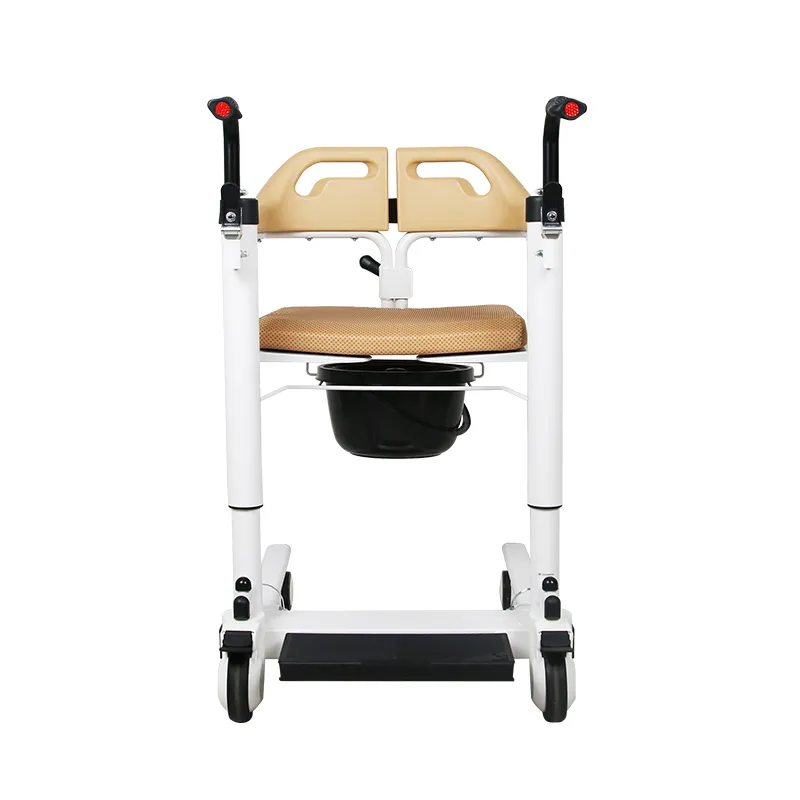
Are there any self-propulsive lift transfer chairs?
While most lift transfer chairs lack self-propulsion, there are a few exceptions, such as:
1. Electric lift and electric drive transfer chairs
Some high-end models (such as those designed for hospital ICUs) incorporate electric wheel drive systems, allowing limited independent movement by the patient via a controller;
2. Lightweight lift and push ring modification models
A few domestic brands have attempted to add controllable push ring systems to lift transfer chairs to meet the special needs of some rehabilitation patients;
3. Hybrid products
Some products are essentially electric wheelchairs with additional lift functionality. These devices can be considered a fusion of a wheelchair and a transfer chair, but they are expensive and complex to use.
However, these models are relatively niche and are commonly found in rehabilitation centers or senior care facilities. The vast majority of ordinary home lift transfer chairs do not have self-propulsion.
Who can try to push a lift transfer chair?
Patients who are theoretically capable of self-propelling:
· Strong upper limb strength;
· Good body stability;
· Normal cognitive and judgment abilities;
· Flat, safe surface;
· Lift transfer chairs with built-in wheel drive (very rare);
People not recommended for self-propelling:
· Elderly patients (over 70 years old);
· Patients with hemiplegia after a stroke;
· Patients undergoing cancer surgery or in the early stages of fracture surgery;
· Patients with unstable mental status;
· Patients with cognitive impairment or Parkinson's disease;
· Patients using devices without a drive mechanism;
Summary: Most patients who use lift transfer chairs are not physically capable of self-propelling, or their devices do not support this.
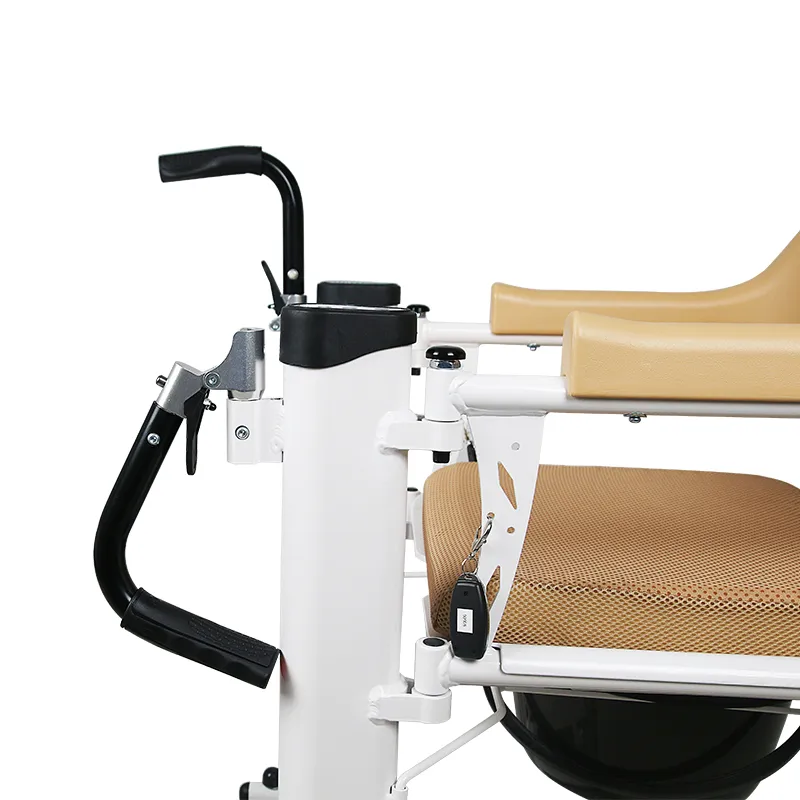
Safety Risk Analysis: Hidden Dangers of Self-Propelling Lift Transfer Chairs
· Risk of Rollover: If a patient pushes forcefully while sitting in a chair with a high center of gravity, the device may become unstable and roll over.
· Wheel locks not released: Many transfer chairs have a default foot brake system, which patients often cannot release on their own. Forcing the wheel lock can lead to wrist injuries.
· Obstructions: Inadequate space in door frames, elevators, and corners can easily cause the chair to become stuck or bumped. Accidental downhill sliding: If a patient lacks self-control and is pushed on a slope or slippery surface, a sliding accident may occur.
Therefore, medical device manufacturers rarely design lift transfer chairs with a "patient-driven" function to maximize safety.
Why do caregivers trust lift transfer chairs?
From a nursing perspective, lift transfer chairs offer the following advantages:
· Single-person transfers are possible;
· Adjustable seat height facilitates docking with platforms such as beds and toilets;
· Braking system ensures stable transfers;
· No patient assistance required during transfers;
· No reliance on patient strength, reducing the burden of care.
Thus, the core of lift transfer chairs is to "serve caregivers," not to ensure patient self-care.
Common Misconceptions When Buying a Lift Transfer Chair
Myth 1: "A lift transfer chair is just a more functional wheelchair"
False. The core design purposes of the two are different. A lift transfer chair is primarily for transfer assistance, not as a means of transportation.
Myth 2: "Elderly people can push themselves to the bathroom in a lift transfer chair"
False. Pushing is mostly performed by family members or nurses, not by the patient themselves.
Myth 3: "An electric lift transfer chair can be self-propelled like an electric wheelchair."
False. Electric lift does not equal electric drive. Most electric lift chairs are only adjustable in height and cannot be driven autonomously.
Can patients push themselves in a lift transfer chair?
—The simple answer is as follows:
In most cases, patients cannot push themselves while sitting in a lift transfer chair.
Based on multiple factors, including device design, safety, intended use, and patient capabilities, the push function of a lift transfer chair is primarily controlled by caregivers, not by the patient.
Only a very small number of lift transfer chairs with electric drive or modified features can enable limited self-mobility for specific patients (with the physical and cognitive abilities) in specific environments.
Using a Patient Lift Transfer Chair - "Dayang Medical" Recommendations
Home User Recommendations:
1. Define the intended use scenario: primarily toilet transfers, bed-chair transitions, and short-distance pushing.
2. Do not treat the lift transfer chair as a "simplified wheelchair."
3. Always arrange for someone to assist in pushing the chair to eliminate the risk of the patient pushing themselves.
Medical institutions recommend:
1. Choose products with sensitive brakes, stable structure, and user-friendly interfaces;
2. Strengthen nursing staff training to improve equipment safety;
3. Consider adding models with controllable electric drives to meet the specific needs of individual patients.
What makes Dayang Medical a reliable Chinese supplier?
Dayang Medical has over a decade of experience in medical equipment manufacturing and exports. Our company is recognized as a National High-Tech Enterprise with multiple patents. We offer high-quality electric wheelchairs, manual wheelchairs, hospital beds, and walking aids at competitive wholesale prices.
If you are looking for a Chinese manufacturer that combines innovation, quality, and affordable prices, Dayang Medical is the brand to trust. Wholesale supply and customized services are available worldwide.

